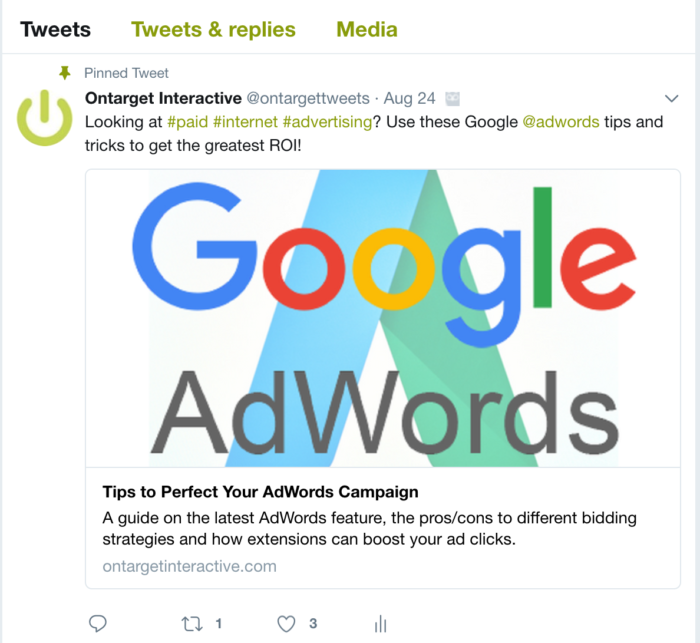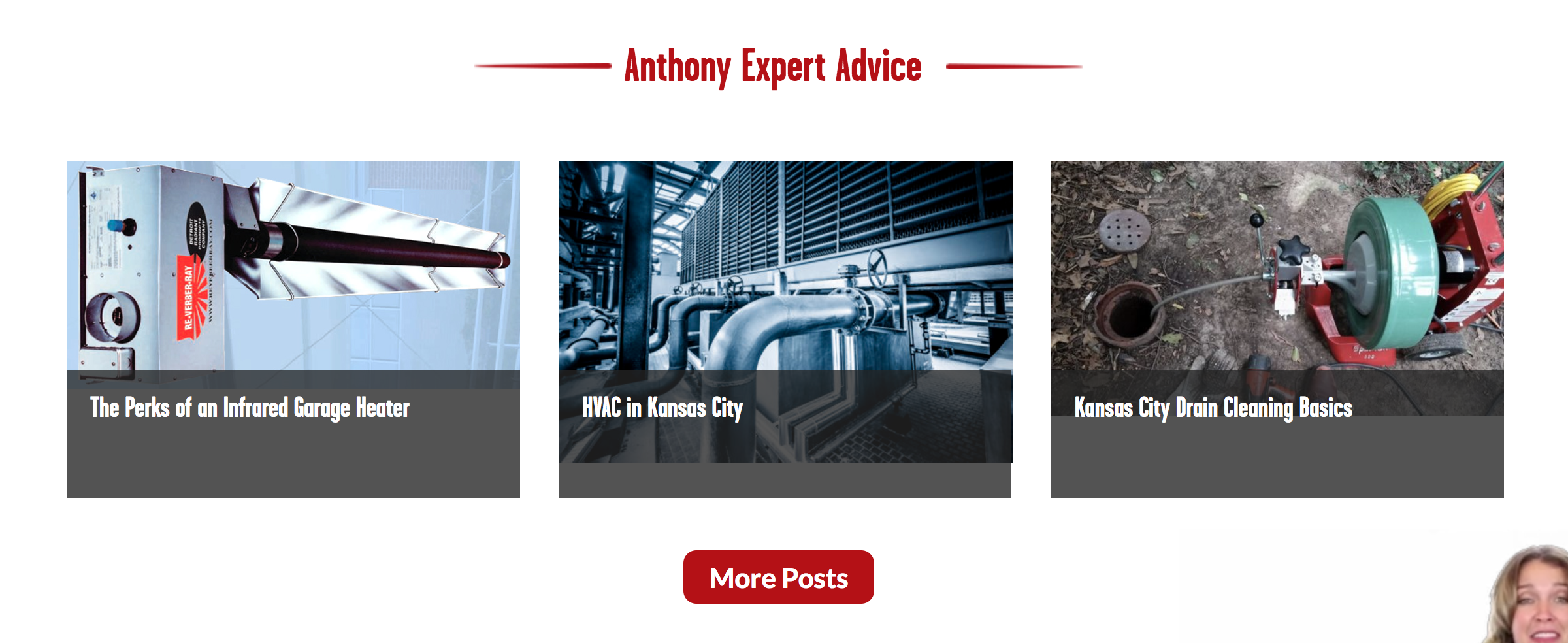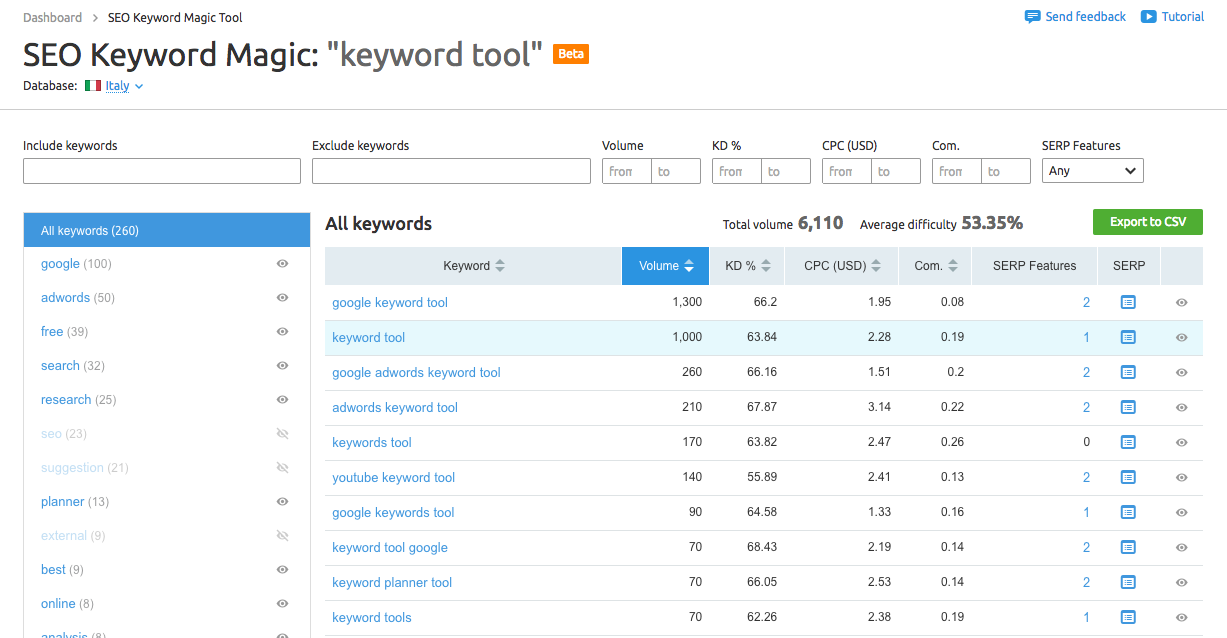Now you might be thinking to yourself: Why would my business need a blog? No one’s actually going to read it, and they take forever to write. Even if your assumption is spot on, you still have to take into account the SEO benefit of blogging. By incorporating blog posts onto your site, you ensure your site content is constantly expanding to allow for better rankings. And if your posts are getting read, this can contribute to your social media marketing (people share what they find informative/entertaining) and your backlinks. A backlink is gained when someone puts a follow link to your website on their own site. If this referring site has a high authority and trust score, all the better. By becoming one of the top bloggers for your business, you ensure that people will always find you first in Google.
Variety
I’ve noticed that a lot of the websites that have blog posts combine press releases, informational articles, employee spotlights and upcoming events to create some variety. This is also a great way to see which types of posts get the most shares on social media. Employee spotlights and news about how your company is helping out the community are particularly popular for social media shares, but they can be harder to SEO for specific keywords.
Informational Articles
Informational articles are the best for search engine optimization, since you can tailor them around the keywords you’re wanting to rank for. Keep relevancy in mind though—there’s no use ranking for a word that isn’t going to lead to conversions. If there’s no intent in the search, you’re less likely to generate revenue from that site visit. If you sell specialty soaps, trying to rank for ‘what is soap made of’ will be less beneficial than trying to rank for ‘best non-allergenic soaps’. One search phrase is looking for information that will not likely lead to a conversion and the other phrase indicates intent to purchase, since the user is looking for the ‘best’.
The Best of the Best
I was surprised by how few Kansas City companies (especially in the food and retail industry) took advantage of a blog. Of the ones that did have blogs, posts were only updated every couple of months, and there was minimal text. Infrequent updates negate the legitimacy of your posts. Not including the date added makes the reader wonder just how old your post is and whether the information is still relevant. Not all blogs are bad though. In this post, we’ll go over the top four business bloggers in Kansas City, highlighting how each of these brands has used their blogs to generate interest in their company and boost their search engine rankings. From formatting to content to variety, these guys have blogging down to a science.
Anthony Plumbing, Heating and Cooling
Not only does Anthony PHC run weekly classes for small fixes around the house, but they also offer an informative blog that covers a range of topics. You can sort their posts by topic (general, heating & cooling, plumbing) or by month. The images within the articles are about more than just visual appeal—they enhance and further explain the text. Since these posts are all over 1,500 words, you get enough information to become an expert yourself.
Their post on infrared garage heaters, for example, covers the benefits of a garage heater, how infrared heating works, how the use of natural gas is better for the environment, how cold weather can affect your vehicle and other types of garage heaters. That’s a lot of info to pack into one post, but it accomplishes something important; The post anticipates the questions you might have after searching for infrared garage heaters and provides the answers. It convinces searchers to invest in the product without throwing out salesman-y jargon like ‘best on the market’. It presents facts and alternative options to ensure you make the best purchasing decision. They have a clear call-to-action at the end of their post to funnel readers directly to a conversion. If you’re reading about infrared heaters, it’s likely because you’re interested in purchasing one. All you’re looking for is a little convincing.
Cerner
Their blog covers a variety of topics, including thought leadership, clinical perspective, value creation, open and interoperable, news and events, continuum of care, revenue management, Cerner culture, physician practice and population health. They include a variety of media uploads as well. Besides just text, they also incorporate podcasts with an introductory paragraph explaining what the podcast will cover. Their text posts reach upwards of 1,300 words, giving them ample opportunities to throw in keywords. They have social sharing icons on the side, including Twitter, Facebook, LinkedIn, email and Google+. At the bottom of the article or podcast, they have a carousel of related posts to make it easy for users to jump from article to article. The date and a bio/picture of the author are featured at the top. As far as layouts go, Cerner boasts one of the best.
They cover niche topics—information that you would really only trust from certified healthcare professionals. Because their posts are so technical, they can’t rely on content scraping to get by. All information is coming from a first-hand source. Where this comes in handy is when people are searching for exact phrases within your post. Other articles aren’t going to pop up as competitors, because your content is original and unique. They even post interviews and articles formatted as stories with real characters you can visualize and care about.
Q39
Q39 makes the list as one of the top bloggers in Kansas City because of their content variety. Under their ‘News and Events’ section, Q39 offers a visually cohesive page featuring Johnson County updates, community events, interviews with influencers in the foodie world, advice, recipes and lists (ie: the best finger lickin’ ribs in Kansas City). What this shows is that Q39 is about more than just advertising their products—they want to provide a space where you can immerse yourself in Kansas City (and BBQ) culture. They showcase other great businesses to boost their own legitimacy.
With about four posts a month, this blog hits their weekly mark. Even if the posts are shorter, this shows a consistency and helps bring up their rankings. What I enjoy the most about their posts is that they have a conversational tone. Since their brand is more relaxed, they have the freedom to make jokes and throw in some metaphors. They also include headers above the different paragraphs. By including H1 tags, they ensure a higher ranking in Google and make it easier for readers to navigate to the paragraph they’re most interested in. If you really like the tone and writing style of a specific blog post, you can check out other articles by the same author.
An important aspect to note with this blog is that they include recipes. This makes perfect sense for a restaurant to have on their site—the recipe is related to the type of food that they cook, and they can be sure that their readership will be interested. Recipes are easy to share over social media. Plus, Q39 includes a link to the video walkthrough, making the process even easier. Consider this: if you’ve just released a new menu item, put up a blog post about ‘dishes you might also like’. Provide recipes, so readers can make the dishes from home. If you’re in the food businesses, you should be leveraging foodie events, recipes and nutritional tips within your blog.
Ontarget Interactive
You must have known this was coming. Of course we were going to list ourselves as one of the top bloggers out there! Luckily for you, I can speak a lot more on the ‘behind-the-scenes’ process of our blog since I’m the one who writes the posts. Here’s a walkthrough of the steps we take with our blog posts:
- Decide which keywords you want to rank for. This can be done by using tools like SEMrush or Google Keyword Planner. If you don’t have access to these tools, you can Google the words you want to rank for and see what your competition looks like. If you’re targeting broad keywords like ‘bedding’ or ‘places to eat’, you’re going to be going up against some big players. Instead, look at long-tail keywords that incorporate location or some sort of descriptor that distinguishes your brand (ie: ‘bedding in Kansas City’).
- Use this list to figure out the topics for your blogs. If you’re targeting ‘gluten-free home delivery meals’, you’ll need to try and incorporate this phrase within your blog post several times to make it clear what the subject of the post is. Try to think of all the questions one might have about gluten-free home delivery meals. You might talk about the different meals you offer, what gluten is or the benefits of home delivery. A good number to shoot for is 1,500 words, but you’ll still be able to rank well if you have less than that.
- Upload your post. Be sure to include plenty of pictures and videos to make the page intriguing (just not too many that it will slow down your site). Incorporate headings and break up your paragraphs. Add alt-tags (pictured below) to the pictures you upload to ensure your site is ADA compliant. Once you’ve proofread and published, share your post on social media. You might even consider putting a slider that showcases your latest blog post uploads somewhere on your homepage.
Contact Us
If you’re looking for a digital marketing agency to help you get started on your blog (or brush the cobwebs off an already established blog section on your site), contact us. We can help you become one of the top bloggers in your industry.







